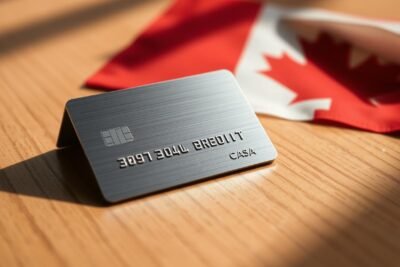
Debt Management Strategies for Young Professionals: Expert Tips

You start with a simple snapshot: list what you own, what you owe, and compute net worth. This small step shows where to focus your energy and helps you set clear financial planning goals.
Last year, Maya, a nurse in Boston, opened a spreadsheet over coffee. She wrote down cash, a paid-off car, a small retirement account, student loans, and a credit card balance. In two months she set a SMART goal: save $500/month for a home down payment in 24 months. That clarity changed her choices.
In this article you’ll learn an approach that fits your income and expenses. You’ll see how budgeting methods and automation make savings and on-time payments happen. You’ll also get quick tips on credit, which affects your borrowing costs and future plans.
- Start With a Clear Financial Picture: Assess, Budget, and Set Goals
- Proven Budget Methods to Free Cash for Debt and Savings
- Debt Management Strategies Young Professionals Can Use Today
- Make Student Loans Work for You, Not Against You
- Smart Credit Management to Boost Your Credit Score
- Protect Your Progress: Emergency Fund and Essential Insurance
- Your Next Moves: Build Momentum and Plan for the Future
Start With a Clear Financial Picture: Assess, Budget, and Set Goals
Take ten minutes to map your accounts, assets, and monthly expenses so choices get easier. Seeing cash, savings, investments, and paid‑off vehicles alongside student loans, credit cards, and car loans gives you the baseline you need.

Map Your Money: Assets, liabilities, and your current net worth
List assets: cash, savings, retirement accounts, investments, and any paid‑off vehicles. Then list liabilities: student loans, credit cards, and car loans. Subtract liabilities from assets to find net worth. This single number focuses your financial planning and helps set realistic financial goals.
SMART goals that match your income, expenses, and timeline
Convert vague wishes into 2–4 SMART goals. For example, save $500 per month for a down payment within 24 months. Make each goal specific, measurable, and tied to your income and fixed expenses.
Create a starter budget that funds priorities and trims waste
Build a simple budget that covers fixed expenses first: rent, utilities, and loan payments. Then allocate funds for savings and goals before variable spending on groceries, entertainment, and transport.
- Connect all relevant accounts to a budgeting app or spreadsheet and set calendar reminders.
- If you freelance, set aside estimated taxes in a separate account and remit quarterly.
- Keep a weekly 10‑minute check‑in to reconcile transactions and tweak allocations.
| Category | Examples | Action |
|---|---|---|
| Assets | Cash, savings, investments, paid-off car | Record balances and dates |
| Liabilities | Student loans, credit cards, car loans | Note balances and interest rates |
| Budget buckets | Fixed, goals/savings, variable | Fund fixed first, then goals, then variable |
| Tools | Apps, aggregators, spreadsheets | Link accounts, set alerts |
Document your goals in writing and tie each to a monthly or per‑paycheck amount so you measure progress from day one. For quick tips to make your starter budget more effective, check this guide on student budgeting tips.
Proven Budget Methods to Free Cash for Debt and Savings
Start by matching a budgeting method to how you actually get paid and spend time. Pick a system you can stick with and treat it like a two‑month experiment. That helps you see what frees cash for savings and retirement without feeling deprived.
50/30/20 vs. zero‑based vs. envelope system
The 50/30/20 rule splits 50% of your income to needs, 30% to wants, and 20% to savings and loan payments. It’s simple and fast to apply.
Zero‑based assigns every dollar a job, so you plan every paycheck. It offers precision when you want tight control over spending.
The envelope system uses cash or digital envelopes for categories like dining and transport to curb impulse spending. Use the one you can follow consistently.
Tools that keep you on track
Connect bank, card, and loan accounts to an aggregator so you see everything in one dashboard. Use budgeting apps, expense trackers, and automated savings apps to create recurring transfers.
For app options, check a curated list of budgeting apps for students that also work for early-career earners.
Areas to cut back without feeling deprived
Identify two or three easy cuts: unused subscriptions, delivery fees, or premium streaming tiers. Redirect those dollars to savings or retirement.
Consider a weekly cash allowance or digital envelopes for dining out. This keeps social life intact while limiting impulse buys.
Pay yourself first
Automate transfers on payday to savings, loan payments, and retirement so saving happens before you can spend. Build a small buffer for irregular expenses to avoid mid‑month scrambling.

"Automate the hard choices so your future self benefits without extra effort."
- Choose the method you’ll actually use.
- Link accounts to spot patterns in real time.
- Automate transfers on payday to make savings default behavior.
For practical tips on trimming everyday costs, read this roundup of real saving habits that many find helpful.
Debt Management Strategies Young Professionals Can Use Today
Deciding how you attack balances can shave months and save hundreds. First, list every balance, APR, minimum payment, and due date so you know the exact starting point.
Choose a method and commit. Avalanche focuses on the highest rate to minimize total interest. Snowball targets the smallest balance for quick wins and motivation. Pick one and stick with it for at least six months.
Avoid high-cost card balances and freeze new charges
Credit card APRs often top 20%, making them some of the most expensive obligations. Prioritize those balances, schedule extra payments right after payday, and stop new discretionary charges.

Consolidation, personal loans, and fixed vs adjustable rates
Consider a fixed-rate personal loan or a 0% intro balance transfer as consolidation options. Weigh fees, total interest, and your payoff timeline before you act.
Fixed rates give payment certainty. Adjustable rates may start lower but can rise, which increases your payment. Adjustable choices work only if you can repay before adjustments kick in.
- Set up automatic payments for minimums and schedule manual top-ups to targeted balances.
- Lower card limits, remove saved cards, and enable spend alerts to prevent relapse.
- Map a payoff timeline so you can see when cash frees up for savings or a home down payment.
"Commit to one plan, automate payments, and revisit your plan quarterly."
For refinance and consolidation research, check the best refinance rates as a starting point when you compare loans and options.
Make Student Loans Work for You, Not Against You
Start by separating federal and private loans so you know which protections and perks apply.
Federal plans can cut monthly payments based on your income and household size. The SAVE (an IDR plan) bases payments on income and family size and often reduces what you pay now.
Federal options: SAVE and PSLF basics
Check SAVE eligibility to lower payments tied to your income and family size. If you work full time for government or a 501(c)(3), verify loan type and payments for Public Service Loan Forgiveness (PSLF), which can forgive remaining balances after 120 qualifying payments.
Private loans: higher limits, fewer benefits
Private loans usually lack federal forgiveness and carry less flexible terms and higher rates. Treat them separately: protect federally backed loans' benefits before refinancing.
Tax edge and practical next steps
You may deduct up to $2,500 of student loan interest each year, which lowers taxable income when you qualify.
- Automate payments from checking; avoid using a credit card for payments.
- Pay extra on the highest‑rate private loans after building an emergency buffer.
- Reassess annually or when your income changes and refinance only if you won’t lose federal protections.
| Type | Key benefit | Watch for |
|---|---|---|
| Federal (SAVE/IDR) | Lower payments based on income | Must certify income and family size |
| PSLF | Forgiveness after 120 qualifying payments | Employment and loan type rules apply |
| Private | Higher borrowing limits, varied rates | No federal forgiveness; higher rates possible |
"Align repayment with your career plans and claim available tax breaks each year."
For details on program rules and eligibility, review resources like federal loan forgiveness to see if public service paths match your goals.
Smart Credit Management to Boost Your Credit Score
Small habits around card use and bill timing can lift your credit score faster than big moves. Focus on two big drivers: on‑time payments and low utilization. Both shape most scoring models.
Payment history and utilization: the two biggest movers
Pay every bill on time. Automate payments so you never miss a due date. On‑time payments form the bulk of your score.
Keep utilization under 30% of available limits; lower is better. Make mid‑cycle payments if balances climb before the statement closes.
Avoid costly traps: minimum payments, rapid applications, overspending
Minimum payments keep accounts current but let interest add up and lengthen payoff time. Pay more than the minimum when you can.
Avoid opening multiple new accounts quickly. Hard inquiries can nudge your score down and shorten average account age.
- Set alerts for utilization and due dates.
- Check all three reports annually and dispute errors.
- Keep an old, fee‑free account open with a small recurring charge and autopay.
"Mindful spending and reliable payments make your money work better for future rates."
Protect Your Progress: Emergency Fund and Essential Insurance
A small, dedicated cushion of cash gives you breathing room when life throws an unexpected bill your way.
Aim for three to six months of living expenses as your initial emergency fund target. Break that total into monthly or per‑paycheck goals so the amount feels manageable.
Building an emergency fund: three to six months of living expenses
Review your budget and decide how many months fits your role and stability. Then set a monthly contribution and stick to it.
Small steps that add up: automation, windfalls, and separate accounts
Automate transfers from checking to a separate high‑yield savings account so the fund grows without extra effort.
Direct bonuses, tax refunds, or side‑gig income into the fund to speed progress. Keep the account separate to reduce temptation.
Insurance essentials for young professionals: health, renters, auto, disability
Health insurance lowers the risk of a single large medical bill. Renters covers personal property and liability. Auto protects vehicle damage and liability costs. Disability income insurance replaces a portion of your income if illness or injury prevents work.
"A solid emergency fund plus basic insurance keeps short‑term shocks from becoming long‑term setbacks."
| Protection | Why it matters | Action |
|---|---|---|
| Emergency fund | Buffers 3–6 months of living expenses | Automate monthly transfers to a separate savings account |
| Health insurance | Reduces out‑of‑pocket medical costs | Choose a plan with balanced premiums and deductibles |
| Disability & renters/auto | Protects income and property from large losses | Compare quotes and set reminders for premium payments |
Each year, review coverage levels and adjust deductibles to match your cash cushion. For practical tips on paying down balances while protecting progress, see this short guide on three smart payoff approaches.
Your Next Moves: Build Momentum and Plan for the Future
Automate one action this month that will keep compounding toward your goals.
Set up automatic retirement contributions each pay period to capture any employer match and boost your retirement savings without thinking about it. Use a high‑yield savings account for short‑term savings and keep your emergency fund funded as expenses change.
Quarterly reviews help you rebalance savings, credit use, and payments as your income and goals evolve. If you plan to buy a home, stress‑test your budget at today’s interest rates and favor a fixed rate for payment certainty.
Keep tracking student loan interest for tax deductions and protect momentum by routing raises to savings or retirement first. For tools to make this easier, try these free budgeting tools.
If you want to know other articles similar to Debt Management Strategies for Young Professionals: Expert Tips you can visit the category Finance.






Leave a Reply